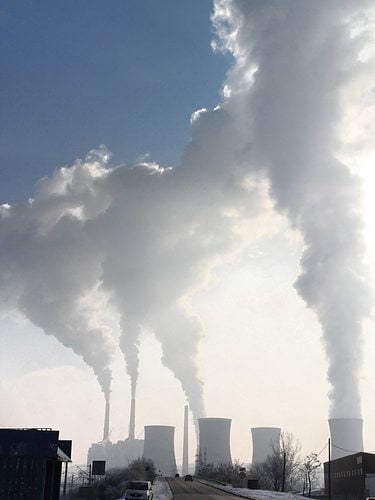

Energy
Geoengineering should not replace cutting emissions, say scientists
Geoengineering should not yet be deployed as a solution to climate change or replace cutting emissions, according to the US National Academy of Science. The organisation called for more research into the area and said the consideration of such technology should serve as a “wake up call”.
Geoengineering involves manipulating the climate in order to reduce the negative effect of climate change. Scientists believe there are a number of ways this can be achieved but have warned it could have unintended and unpredictable consequences.
The report from the National Research Committee concluded that there is no substitute for dramatic reductions in greenhouse gas emissions to mitigate climate change. It explains that strategies to remove carbon dioxide from the atmosphere are “limited by cost and technological immaturity” and albedo-modification technologies, which aims to increased the ability to reflect incoming sunlight, “poses considerable risks”.
Chair of the committee, Marcia McNutt commented, “That scientists are even considering technological interventions should be a wake-up call that we need to do more now to reduce emissions, which is the most effective, least risky way to combat climate change.
“But the longer we wait, the more likely it will become that we will need to deploy some forms of carbon dioxide removal to avoid the worst impacts of climate change.”
The committee added that if society ultimately decides to intervene in Earth’s climate it should be based on more scientific research, including ethical and social issues, than is presently available.
In terms of carbon dioxide removal strategies the report states that whilst environmental risks vary they are “relatively low and generally understood”. However, the method has limited capabilities and large-scale deployment would cost more than replacing fossil fuels with clean energy alternatives. The organisation recommended research and development investment to improve methods of carbon dioxide removal and disposable at scales that would have a significant impact.
In contrast, the committee said albedo-modification research would have legal, ethical, social, political and economic ramifications, as well as only temporarily masking climate change. The committee opposed the deployment of such techniques, stating it would be “irrational and irresponsible” to implement sustained albedo-modification without pursing emissions mitigation, but recommended further research.
Researchers from the University of Reading have previously looked at a particular type of geoengineering that involves aerosols being artificially sprayed into the upper atmosphere in order to reflect sunlight, mimicking the effects of a large volcanic eruption. The study found that whilst this could offer a solution for northern Europe and parts of Asia it would be at the expense of regions in Africa, North and South America and south-east Asia.
A professor from Washington University has also warned that geoengineering could have unknown consequences in decades to come and has called to a debate on the ethical issues around the practice.
Photo: Emilian Robert Vicol via Flickr
Further reading:
Geoengineering could make climate change’s impacts worse
Al Gore labels geoengineering ‘insane’ as alternative climate fixes are debated
Geoengineering presents ‘huge’ risks for fragile ecosystems


 Environment10 months ago
Environment10 months agoAre Polymer Banknotes: an Eco-Friendly Trend or a Groundswell?

 Environment11 months ago
Environment11 months agoEco-Friendly Home Improvements: Top 7 Upgrades for 2025

 Features8 months ago
Features8 months agoEco-Friendly Cryptocurrencies: Sustainable Investment Choices

 Features10 months ago
Features10 months agoEco-Friendly Crypto Traders Must Find the Right Exchange





























